BUBO Listing News
We have updated our world lists to align with the major 2023 eBird/Clements update, and the IOC 14.1 update. With 124 splits and 16 lumps from the former, lots of you will be gaining armchair ticks!

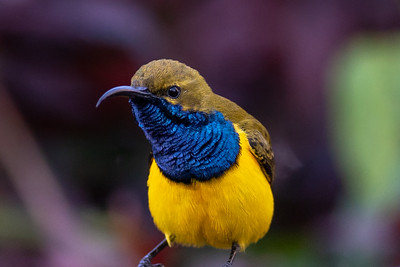
There are a few species that have been added but may not be highlighted as splits that you need to address (for reasons that aren't worth going into!). These include:
- Rufous-backed Dwarf Kingfisher
- Coconut and Biak Lorikeets
- Pale-legged, Pacific, and Caribbean Horneros
- Micronesian Rufous Fantail
- Siberian Nuthatch
- Eye-ringed Parrotbill
- Carmiol's and Yellow-lored Tanagers
If you have seen these then you should add them to your lists manually. (Same with Jamaican Petrel and Macquarie Parakeet, but both are probably extinct so unlikely to trouble anyone for updates!)
Some split species are likely to be incorrect on individual country or region lists: it is difficult to know every country that Yellow-billed or Medium Egret have occurred in for example! We have made a best guess, but do point out any errors you may find.
New to BUBO Listing is Winter Listing. Yes, winter listing is apparently a thing and happens mostly in Canada, where winter is a thing too. The winter listing period starts on 1st December and ends at the end of February and is a great motivator for getting people out birding when it might be easier not to. The top Canadian winter list is 324 (as at 2022-23) but a decent list is anything over 200. You can read more about winter lists in the 2022 report from Canadian Listers' Corner.
Winter Listing is supported in BUBO Listing via a new "list type". But don't think you have to be in Canada: you can winter list for anywhere in the world. And no, we aren't intending to add spring listing, summer listing, and autumn/fall listing!
Note that to enter a "season" list you should select the year for the start of the winter season, i.e. create a winter list selecting year list of 2023 to represent December 2023 to February 2024.
So, now that December has come, what are you waiting for? Put those snow boots (or thermal flip-flops) on and get out winter listing.
Thanks to Mark Dennis (from the bit of Canada that rarely freezes, with a Canada winter list of 243 at the time of writing, and out daily looking for more) for this idea!
We have just launched New Guinea lists, based on IOC. The following checklists are available:
New Guinea: the overall island of New Guinea
West Papua: Western New Guinea (formerly Irian Jaya), the Indonesian portion of the island
Papua New Guinea: the Independent State of Papua New Guinea, i.e. the eastern half of New Guinea and offshore islands
These lists are based on those published at Avibase, which do have several errors so please point out any wrong or missing species.
A few new features have just been launched.
Recent Tick
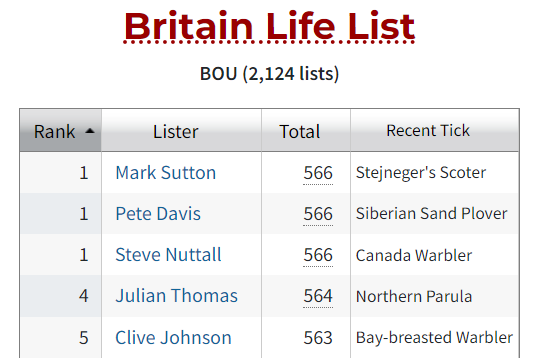
All rankings tables now show each lister's most recent tick. (This is their last added record, which may be historical.)
Species Search
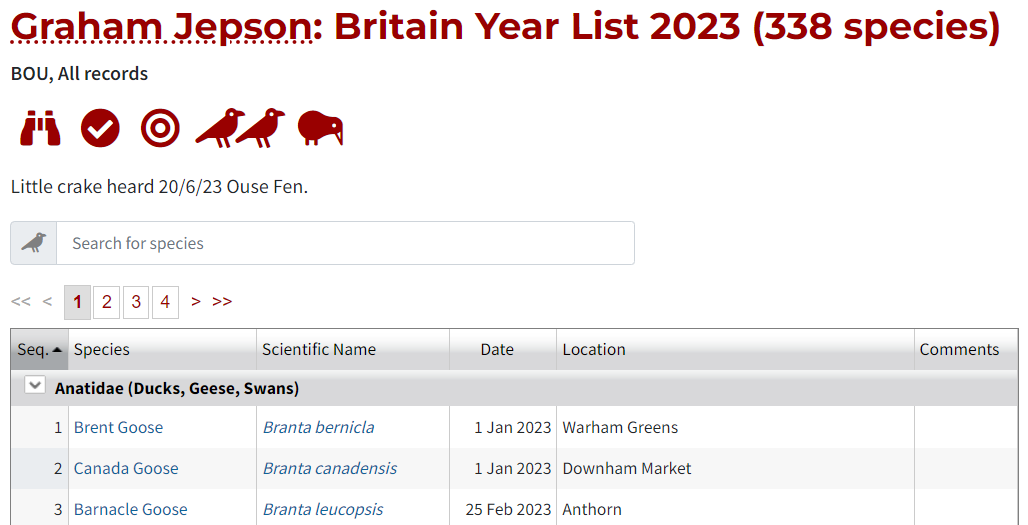
You can now search for any particular species on a list and jump to that species.
Filter by Family
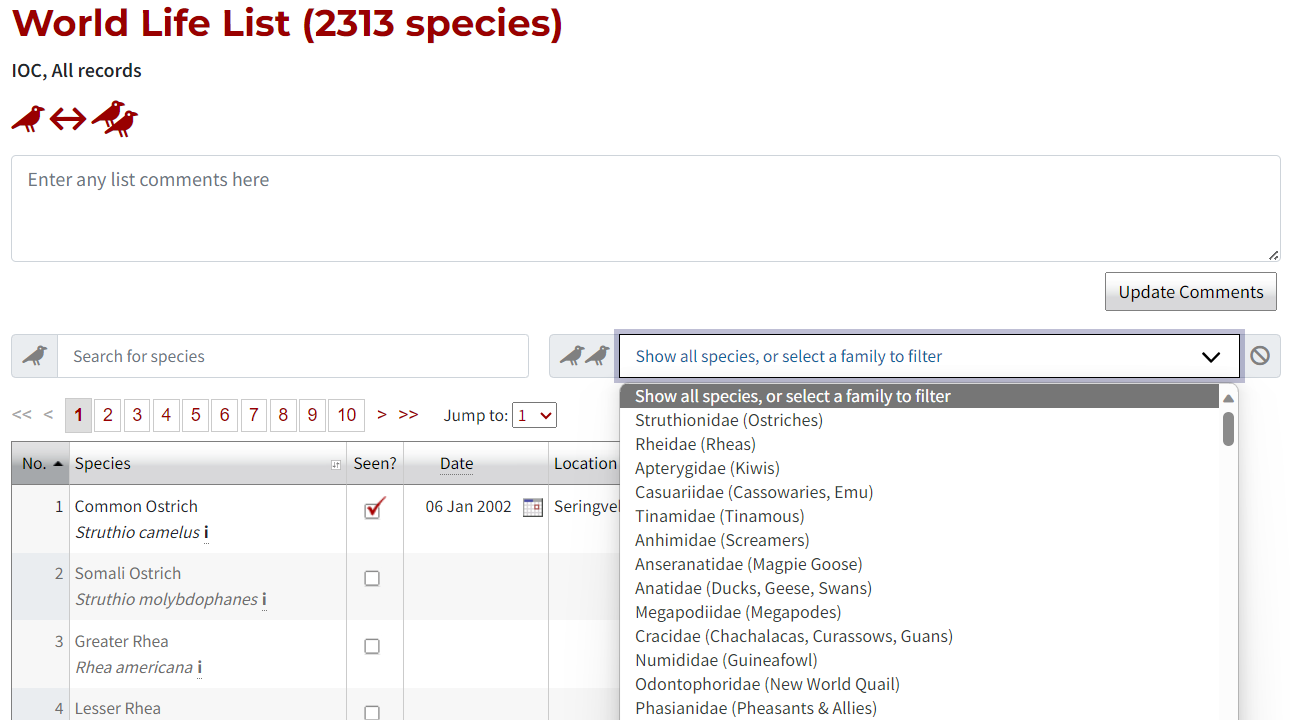
When editing a list using Batch Edit, you can choose to filter the list and show only the species for a selected family.
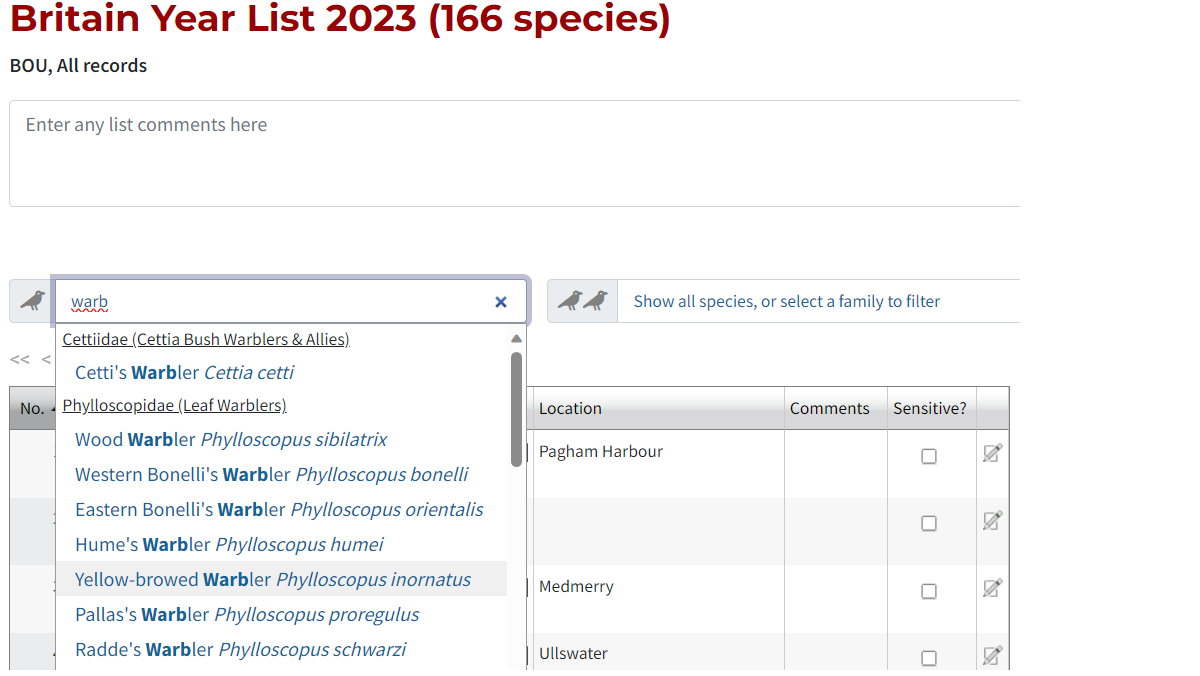
In addition, species searches now show matching results broken down by family.
The IOC World List has been updated to support version 13.2 from July 2023. Of most interest to Western Palearctic listers will be the split of Lesser Sand Plover into Siberian and Tibetan, which will delight top British twitchers as both have occurred in England!
Also of relevance to Britain is that we have updated the BOU British List to include the split of Stejneger's Scoter from White-winged Scoter, giving another armchair tick to some of those who saw the Lothian bird last winter.
- System upgrade
- More Mistakenly-recorded Species
- Have you really seen Azure-winged Magpie?
- Clements Checklist 2021 Updates
- IOC World Bird List v11.2
- IOC World Bird List v11.1
- Which bird families do you need?
- IOC World Bird List v10.2
- Self-found, garden, green, photo, ringing, and even 'false' lists!
- Lockdown Listing

